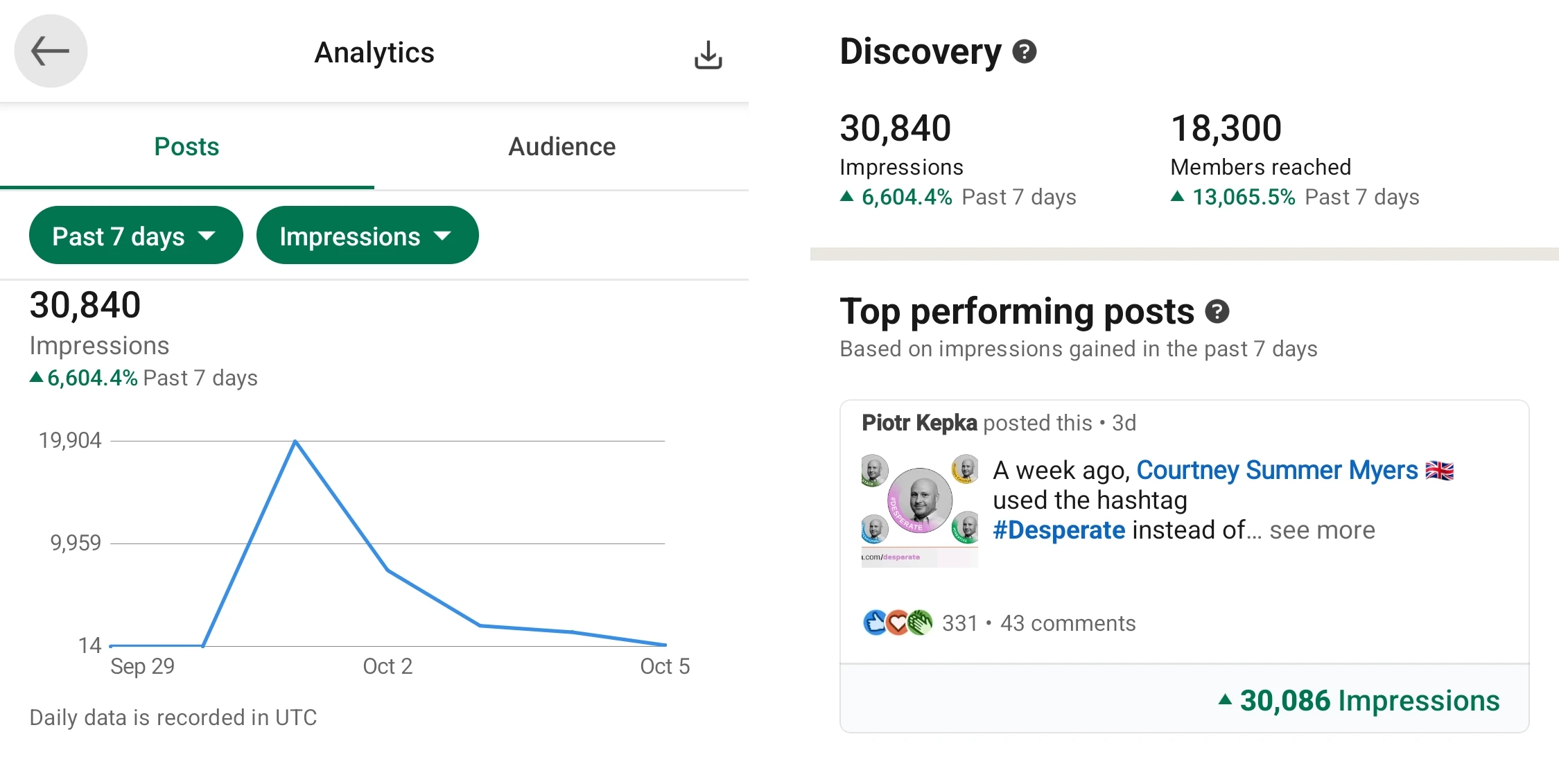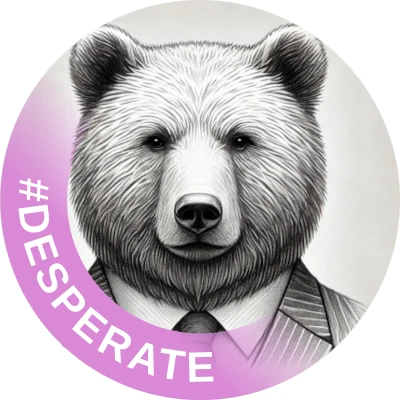How I Accidentally Went Viral on LinkedIn with the #Desperate Hashtag. And a Bear

Piotr
Oct 9, 2024
Picture this: you’re sitting at your computer, working late into the night on a quirky project you started on a whim. You finally wrap it up and, instead of posting immediately, you decide to sleep on it. Early the next morning, you hit "post" on LinkedIn and go about your day. By the time you check back, you’re semi-viral. That’s exactly what happened to me, turning the hashtag #desperate into a platform for creativity—and a surprising moment of social media fame.
The Desperate Badge and the Birth of My App
It all started with a LinkedIn post by Courtney Summer Myers 🇬🇧, where she introduced the #desperate badge as a cheeky overlay for job-seekers to show their determination. Like many, I’m currently navigating a tough job market. But rather than just using the badge, I had an idea: Why not create a tool that allows anyone to design their own custom banner?
So, late one afternoon, I took to coding. By 3 a.m., after combining my front-end skills with some basic graphic design, I had a working app that could apply personalized banners to LinkedIn profile pictures. And because Bern, Switzerland—where I live—was named after a bear, I threw in an Easter egg: a bear. To try the app, users could slap the #desperate banner (or any custom text) onto a bear picture, without needing to share any personal data. The app was designed to be secure and operate entirely within the user's browser. Otherwise, who would trust a random guy on the Internet with their picture?
But here's where things took a wild turn.
From Idea to 30,000+ Impressions in Days
I posted about my new tool on LinkedIn, fully expecting maybe a handful of views from friends. The next morning, I had almost 20,000 impressions, over 150 reactions, and nearly 20 comments. My phone wouldn’t stop buzzing. On October 1st, the post reached its peak, with thousands of people engaging. By October 5th, the post's virality slowed, but it had already hit over 30,000 impressions and 330 reactions in total.
Why Did It Go Viral?
The secret sauce? Timing. I launched my app right as the #desperate badge was gaining momentum on LinkedIn. The badge struck a chord with people worldwide, frustrated with their job search struggles. My app, which allowed users to easily create custom banners, offered a quick, fun way to join the trend—no graphic design skills needed, and it could all be done in under a minute.
What made it stand out even more was how simple and secure the app was. Users didn’t have to upload any personal data, everything worked directly in their browser. No graphic design skills were required. It was just me, my app, and a quirky bear.
What Came Next?
Besides a flood of LinkedIn notifications, I received about 40 networking opportunities. Some people offered to recommend me for jobs, and while I didn’t land any concrete offers from the viral post (yet), I’ve certainly expanded my network in ways I never expected. And let’s face it, in today’s job market, visibility is currency.
Reflections on Going Viral
Going viral is a strange, exhilarating, and overwhelming experience, especially for someone who had rarely posted on social media before this. In just a few days, I saw firsthand how quickly something can snowball online. What started as a fun side project transformed into a viral moment—and a personal lesson in seizing opportunities.
So what’s next? Well, I’m continuing to explore projects like this, sharpening my skills, and trying to stand out in a very competitive market. If nothing else, this experience has reinforced one thing: don’t wait for the perfect opportunity to showcase your skills. Sometimes, you just have to throw a bear into the mix and see what happens.
And if you want to check out my app or learn more about my projects, head over to piotrkepka.com/desperate.
Now, let’s see what I can cook up next. Hopefully, it doesn’t involve staying up until 3 a.m. again... but no promises.
Statistics
I believe in being transparent because it helps build trust and fosters stronger relationships.

